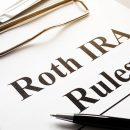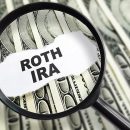Earning Over $345,000? Learn about 401(k) Income Limits and How to Maximize Your Contributions

Most employees use a 401(k) plan as part of their office benefits. The 401(k) is an employer-sponsored plan offered by many companies, both large and small. Automatic enrollment makes it convenient for employees to participate, and with high annual contribution limits, you can easily maximize your investments and earn a high employer match. However, there are important rules governing the use of a 401(k) that many investors do not fully understand, particularly regarding income limits. Understanding these rules is essential for effective retirement planning.
This article will explore the 401(k) income limits for contributions in 2024, including the impact of earning more than $345,000, and provide strategies to maximize your contributions. Consulting a financial advisor can also help navigate these complexities and optimize your retirement savings.
Understanding 401(k) income limits
Before understanding the income limits, you must first know how much you can contribute to your 401(k) annually. The Internal Revenue Service (IRS) sets limits on 401(k) plan contributions annually. For 2024, the maximum 401(k) yearly limit for employee contributions is $23,000 for investors under the age of 50 or $30,500 for those aged 50 and older, including catch-up contributions. There is also an overall limit on total contributions, which includes the employer and employee’s total contribution to a 401(k) plan. For 2024, this total contribution limit is $66,000 for those under 50 or $73,500 for those aged 50 and older with catch-up contributions.
Now, there is another limit on the account apart from the traditional 401(k) limits for contributions that a lot of investors do not know about. As per the 401(k) (a) (17) rule, there are some restrictions on the compensation that can be considered for 401(k) contributions. For 2024, the 401(k) maximum income to be able to contribute to a 401(k) should not be more than $345,000, including bonuses or commissions earned in a year. This limit affects both employer and employee contributions.
Employers use this limit to ensure they do not make excess contributions, which would violate IRS regulations. Many companies stop all contributions, both employee deferrals and employer matches, once an employee’s compensation reaches the $345,000 limit to prevent any accidental overfunding. If you hit the $345,000 compensation threshold midway through the year, your 401(k) contributions, both from you and your employer, will cease for the rest of the year. For example, say you earn a $600,000 annual salary. Once you have earned $345,000 in the year, your employer will stop making contributions to your 401(k) to ensure compliance with the 401(k) (a) (17) limit. Consequently, any salary you earn beyond $345,000 will not contribute to your 401(k) plan for the year. This results in fewer contributions from your end and comes in the way of earning free employer matches as well.
Do 401(k) contributions automatically stop at the limit?
Depending on your company, your plan may either automatically stop your contributions once you reach the limit or allow you to continue. It is advisable to discuss this with your employer.
Moreover, there are additional contribution restrictions for Highly Compensated Employees (HCEs) and key employees as defined by the IRS. An individual who owned more than 5% of the business offering the 401(k) plan at any point during the past year or has earned more than $155,000 in 2024 is considered an HCE. Key employees are defined as individuals who meet any of the following criteria:
- Owning more than 5% of the company
- Owning at least 1% of the company while earning over $155,000 in compensation
- Or, serving as an officer with compensation exceeding $220,000
Being classified as an HCE or key employee can subject an individual to certain restrictions on 401(k) contributions to ensure that retirement plans are not disproportionately benefiting higher-paid employees. Companies usually conduct the following tests in this regard:
- Actual Deferral Percentage Test (DP test): This test compares the average deferral rates, which are the percentage of the salary contributed by HCEs or key employees, to those of non-HCEs (NHCEs). If the average deferral rate of HCEs exceeds that of NHCEs by a certain margin, the plan returns excess contributions to HCEs and key employees.
- Actual Contribution Percentage Test (ACP test): This test works just like the DP test but includes employer-matching contributions and employee after-tax contributions. It ensures that the overall contributions, including employer matches for HCEs and key employees, do not exceed those for NHCEs.
What happens if I over contribute to my 401(k)?
Well, if a 401(k) plan fails non-discrimination tests, and you overcontribute, you may have to reduce your contributions or receive excess contributions back and potentially face tax consequences.
SPONSORED WISERADVISOR
Ways to maximize your contributions despite the 401(k) income limits
Here are some ways to circumvent the income limits for 401(k) accounts and ensure your retirement planning stays unaffected:
1. Plan and calculate your contributions in advance
To maximize your 401(k) contributions, you need to adjust your contribution rate based on your earnings up to the compensation limit of $345,000. For individuals over 50 years old, the maximum contribution to a 401(k) plan stands at $30,500 in 2024. By dividing the maximum contribution by the compensation limit of $345,000, you can find the ideal contribution rate, which rounds up to approximately 9%. On the other hand, for those under 50, the maximum contribution allowable is $23,000, with the same compensation limit of $345,000. By dividing the two, the contribution rate stands at approximately 7%.
Setting the correct deferral percentage from the beginning of the year can help you maximize your 401(k) contributions. If you are over 50, you can set your contribution rate to around 9% of your salary to reach the maximum contribution limit of $30,500 by the time you hit the $345,000 compensation limit during the year. If you are under the age of 50, you can set your 401(k)-contribution rate to around 7% of your salary to reach the maximum contribution limit of $23,000 by the time you hit the $345,000 compensation limit. This way, you can make sure you are contributing the maximum allowable amount before reaching the compensation cap.
2. Use a non-qualified retirement account
Non-qualified retirement accounts offer an alternative approach for high-income earners beyond the traditional 401(k) limits. These accounts can be established by employers, just like 401(k)s, but allow the company to follow higher contribution limits and retain their top high-earning talent.
Non-qualified defined contribution plans allow organizations to make contributions on behalf of select employees, typically those in higher income brackets, without the restrictions imposed by qualified plans like 401(k)s or IRAs. Companies can use these accounts to deposit excess matching contributions. Moreover, similar to 401(k)s, the funds deposited into these accounts can be invested in a variety of assets, allowing for potential growth over the long term. However, it is important to note that contributions to non-qualified accounts are not tax-deferred, unlike qualified plans. Hence, they are subject to immediate taxation. Additionally, the stability and risk associated with these accounts may be contingent upon the employer.
It is essential for employees considering non-qualified retirement accounts to familiarize themselves with the specific rules and regulations governing these plans. The rules and investment options can differ from company to company. So, understanding these nuances is crucial for maximizing the benefits of non-qualified plans.
3. Contribute to a backdoor Individual Retirement Account instead
If you have maximized your contributions to your 401(k) and still have funds available for retirement savings, you can explore other tax-advantaged accounts, such as IRAs. Roth IRAs offer attractive tax benefits, such as tax-free growth and tax-exempt withdrawals in retirement. However, the IRS imposes income limits on who can contribute directly to a Roth IRA. For tax year 2024, if you are a single tax filer, your Modified Adjusted Gross Income (MAGI) for the year should be under $161,000, and for married couples filing taxes jointly, the MAGI limit is $240,000. If your income exceeds these thresholds, you are typically not eligible for direct Roth IRA contributions. Despite the income limitations, high-income earners can still contribute to a Roth IRA through a strategy known as the backdoor Roth IRA.
A backdoor IRA allows high-income earners, such as those earning over $345,000, to contribute to a Roth IRA indirectly. The strategy bypasses the income limitations set by the IRS for direct Roth IRA contributions, and helps high-income earners benefit from the account, even with the income limits.
While the backdoor Roth IRA strategy offers a way for high-income earners to access the benefits of a Roth IRA, there are some tax considerations to keep in mind. When you roll over to a backdoor IRA, you pay tax on the converted amount. If you have other pre-tax IRA funds, such as rollovers from employer-sponsored 401(k) retirement plans, the IRS applies the pro-rata rule to calculate the taxable portion of the conversion. This means you may owe taxes on a portion of the conversion, as per the ratio of your pre-tax IRA funds to your total IRA balance.
4. Consider a Health Savings Account (HSA)
HSAs offer a valuable tool for tax diversification and can help high-income earners effectively use their excess earnings towards retirement savings. HSAs provide triple tax advantages, which makes them highly attractive. Contributions made to an HSA are tax-deductible, so you lower your taxable income. Additionally, HSA funds grow tax-free, similar to a Roth IRA. So, any earnings or interest generated by investments within the account will not attract tax. Lastly, the withdrawals are tax-free if used for qualified medical expenses.
To contribute to an HSA, you must be enrolled in a High-Deductible Health Plan (HDHP). The 2024 contribution limits are $3,750 for individuals and $7,500 for families.
To conclude
The 401(k) income limits can pose challenges for maximizing your savings, but they serve an essential purpose. These limits have been put in place to promote fairness among employees. With these limits, the IRS prevents highly compensated individuals from disproportionately benefiting from employer contributions. If your salary exceeds $345,000, you may find it difficult to receive the maximum employer contributions to your 401(k). However, careful planning can help you approach this limit strategically and ensure you contribute up to the maximum contribution allowed. Additionally, exploring alternative savings avenues beyond employer-sponsored 401(k) plans can be advantageous. Options such as non-qualified defined contribution plans, backdoor IRAs, HSAs, and other investment instruments like stocks, bonds, real estate, mutual funds, etc., can provide additional opportunities for retirement savings. Consulting with a financial advisor is advisable to create a contribution strategy that aligns with your specific financial goals and circumstances.
Use the free advisor match tool to get matched with seasoned financial advisors who can help you leverage a diverse range of options to optimize your 401(k) contributions. Answer a few simple questions based on your financial needs, and the match tool can help you find 2 to 3 financial advisors who are best suited to help you.











